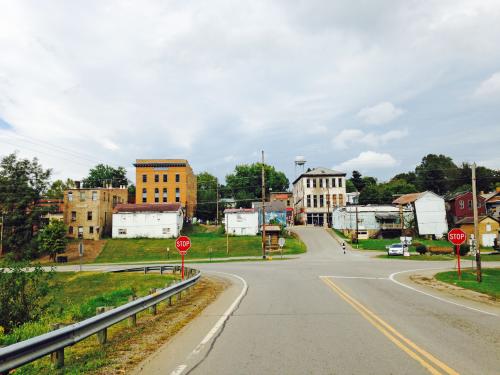Introduction
Two decades into the new millennium, the digitalization of American life is no longer striking—it is ordinary. Every industry relies on computing, cloud storage, or other digital equipment to sell goods and services. Employers increasingly demand more advanced digital skills from the labor force. Meanwhile, people’s individual lives often orbit around the internet, whether at home, at work, or on the move. Even decades-old infrastructure—from roads and rails to water pipes and the energy grid—now relies on digital equipment for construction, operation, and modernization.
Broadband is so influential on society that we would now call it essential infrastructure. That means affordable subscription prices, universal access to connected devices, and a population equipped with digital skills are now vital characteristics of a healthy neighborhood, city, state, or country. Broadband’s applications are so far-reaching that these physical networks directly and indirectly affect a wide range of conditions that impact health and life outcomes, known as social determinants of health (SDOH).
Despite its importance, broadband is still far from ubiquitous. Millions of households do not have access to high-speed wireline or wireless services, and many more lack the digital skills or income to use online services. These gaps persist across all kinds of places: in every single state, regardless of density levels, from small towns to urban neighborhoods, and among demographic groups of all races, educational attainments, and income levels.
Moving forward, the country’s public officials and their private and civic sector peers face a critical choice. If broadband is essential infrastructure, then regulation and public policy should support every American community having equitable access to broadband and the skills necessary to use it.
Over the past year, Brookings Metro and the National Digital Inclusion Alliance pursued research to understand the connections between broadband and health and equity, as well as assess the gaps in broadband access and adoption, the market and policy barriers that lead to those gaps, and promising points of intervention for local, state, and federal leaders to deliver shared value to individuals and entire communities.

Why broadband matters
For most Americans, broadband is commonplace in professional, personal, and social interactions. Yet even with this ubiquity, the extent of broadband’s health and equity benefits aren’t fully understood. In part, this is because broadband’s physical networks do not directly impact health and equity outcomes in the way other infrastructure systems do. Instead, broadband serves as a platform on which a range of different applications operate and impact individuals. Just having an internet connection does not boost someone’s health outcomes—but using the internet to access remote health care providers, services, and information can serve as a conduit to improved physical and mental health.
Because broadband’s applications are so wide ranging, it can deliver services that touch every social determinant of health. From economic stability, to education, to social supports, to civic agency, broadband and the digital services it enables are today intrinsically tied to collective health and equity outcomes.
In terms of economic outcomes, broadband delivers benefits to both individuals and communities. Broadband makes it easier for job seekers to search for jobs, apply for them, and to keep looking for longer. In turn, businesses reap benefits from e-recruiting, which makes it less expensive to access a larger pool of candidates. And having a digitally fluent workforce brings productivity gains to firms, who can then reward employees with higher wages. Taking a macro lens, other researchers have found that higher levels of broadband adoption lead to economic growth, higher incomes, and lower unemployment.
Broadband also plays an important role in improving social outcomes. Broadband democratizes access to education, offering a wide supply of free and open education platforms, courses, and resources. It can also help people foster social supports and stay in contact with a broader social network. For traditionally marginalized groups who are prone to social isolation, access to the internet allows them to connect to others anonymously. Though education and social support both have indirect health benefits, telehealth—the use of telecommunications to deliver health services and education—can directly improve health outcomes, especially for those who otherwise lack access to medical providers.
Broadband is the country’s most inequitable infrastructure
The current state of American broadband access, adoption, and use is one of disparate outcomes. According to the 2018 American Community Survey (ACS), 18.1 million—or 15%—of households do not have subscriptions to any form of “broadband” internet service (the Census Bureau defines broadband as anything faster than dial-up). Compare that to the 99.6% of households with complete plumbing, according to the ACS, or the effective 100% of households with access to electricity.
Broadband works best when households have both an in-home connection—for activities such as telework and entertainment streaming—and a wireless subscription. However, of those households with a broadband subscription, about 14 million only have a cellular data plan, and 12.3 million only have a wireline subscription.

Broadband gaps infect every kind of community. The majority—13.6 million—of digitally disconnected households live in urban areas. Meanwhile, rural broadband gaps tend to garner attention because the overall adoption rate in rural areas (81%) is still five percentage points lower than that of urban areas (86%).
Comparing statewide broadband adoption underscores this geographic divide (Figure 2). In 2018, the average state had a broadband adoption rate of 84%, but there was still a nearly 15-percentage point difference between the states with the highest rate of adoption (Washington and Utah, at 90%) and the lowest (Mississippi, at 76.3%). These differences can largely be explained through social, economic, and geographic contexts. The states with the lowest broadband adoption rates also had the lowest median incomes, highest shares of rural communities, and the highest shares of communities of color.

Looking further at how broadband adoption intersects with communities of color at the national level, white, Asian American, and Latino or Hispanic households all have broadband adoption rates above the national average (at 90%, 94%, and 86%, respectively), but Black households have a lower adoption rate, at 82%. A neighborhood-level analysis revealed even starker differences. While the average majority-white tract had an average broadband adoption rate of 83.7%, the average majority-Black tract (more than 50% Black residents) had a broadband adoption rate of just 67.4%.
Similarly, there are drastic differences across income groups, particularly for low-income communities and communities with high levels of poverty. At the national level, households earning less than $20,000 have a broadband adoption rate of 62%, those earning $20,000 to $74,999 have an adoption rate of 83%, and households earning more than $75,000 have an adoption rate of 85%. Similarly, the average tract with a poverty rate lower than 20% had an 81.8% broadband adoption rate, while the average tract with a poverty rate over 20%—or what qualifies as concentrated poverty—had an average broadband adoption of 64.9%.

Time and again, researchers confirm these findings: those least likely to have broadband in America are communities of color and low-income communities, suggesting that systemic barriers remain in place.
Systemic barriers to universal broadband
Broadband may be essential, but it’s not hard to find reasons Americans choose not to subscribe.
Pricing is one of the clearest structural barriers to adoption. Unfortunately, due to a lack of federal reporting standards requirements, there is a lack of clear data on consumer broadband pricing. However, targeted reporting does offer some evidence of the pricing challenges for disadvantaged American households. According to the FCC’s sixth International Broadband Data Report, comparing average unweighted prices, the United States ranks 18th out of 23 countries that offer fixed standalone broadband plans with download speeds between 25 Mbps and 100 Mbps (figure below), and 26th out of 28 countries that have fixed standalone plans with download speeds of 100 Mbps or greater.

Thomas Philippon argues that the reason customers face higher prices in the US is because the government ceased to enforce pro-competition policies over the past two decades. In 1998, there were 4,500 ISPs in North America, and customers could potentially choose between hundreds of providers. Now, there are just a handful of major ISPs across the country, and most consumers can only choose between one or two of them. As consolidation continues, basic economics suggests prices will continue to rise without targeted public intervention.
Beyond just having a broadband subscription, users need to have a range of digital skills to be active and engaged participants in digital spaces. However, according to the Pew Research Center’s most recent report on Digital Readiness Gaps, the slight majority (52%) of U.S. adults are still “relatively hesitant” when it comes to new technologies and digital skills. This means that they have low levels of digital skills, limited trust in the internet, or don’t often turn to it as a source. The report’s national numbers further illustrate the depth of the challenge: 60% of adults find it difficult to know whether the information they find online is trustworthy, and 40% usually need help setting up or navigating new devices.
Though access to broadband is not often cites as a barrier to broadband adoption, the problem still persists, especially in rural areas. Setting up rural broadband networks demands significant capital investment to reach a limited number of potential customers. Consequently, private ISPs often ignore predominantly rural markets. Some urban and suburban neighborhoods face similar challenges due to ISPs skipping over or underserving specific areas—a practice that’s come to be called “digital redlining.” Current federal regulations do not require ISPs to service every resident or business within their service geography or to bring faster speed tiers to every neighborhood equally. As seen in Cleveland and Dallas, this regulatory architecture permits market failures even within otherwise well-served metropolitan geographies.
Systemwide interventions to address broadband gaps
Broadband’s ability to reach and positively impact households depends on three critical inputs: physical availability, affordability of services and equipment, and digital skill levels. Any system-level approach to improving broadband will include interventions that address all three.
Broadband availability gaps are a natural offshoot of the privately owned and privately financed industry model prevalent across the country. Improving broadband’s physical reach will require interventions that either incentivize private capital to invest in riskier geographies, allocate public funding to construct public networks, or some mix of the two. Federal, state, and local governments can all incentivize build-outs of private networks to connect difficult-to-reach places. Likewise, all levels of government can play a role in supporting publicly owned broadband networks, or what are commonly called “muni networks.” However, many states currently use preemption to make publicly owned networks and even public-private partnerships either illegal or extremely difficult to establish.
State and local governments can also use their current capital assets to fill network gaps via targeted wireless services. Though not a full substitute for an in-home broadband subscription, public access points can provide service in areas where it may otherwise be unavailable, slow, or unreliable.
Making broadband more affordable is another important intervention. Here, too, the public sector has an opportunity to influence affordability. Direct subsidy programs can be run from any level of government, such as the FCC’s Lifeline program. Federal law could also permit cable franchise agreements to begin including pricing components within their broader legal frameworks. Likewise, the public sector can operate equipment purchase or leasing programs. Any federal, state, or local capital grants could require private companies to offer affordability policies as a condition of receiving a grant. The federal government could also do more to promote transparency, set national affordability standards, and partner with private companies who are already leading affordability efforts.
Boosting digital skills relies on a network of public, private, and civic actors. Primary schools, public libraries, and various nonprofit organizations can host digital literacy interventions. Workforce development agencies can survey employer needs and develop contemporary training modules. And ISPs can offer direct funding and expertise to support these efforts.
There are also multiple efforts underway at the federal level to repurpose current policies to advance digital skills development. One example is to ensure banks can use Community Reinvestment Act credit to financially support community digital inclusion programs serving Low and Moderate Income (LMI) households in their lending areas.
Strategies to educate decisionmakers, community members, and influencers
In addition to direct interventions related to availability, affordability, and skills development, communication techniques are essential to maximize effectiveness. Boosting broadband adoption requires awareness among disconnected populations. But just as importantly, reaching universal adoption requires decisionmakers and community members understanding the systemic barriers and committing to overcome them. From our research, interviews, and case studies, we have created a series of strategies that can improve efforts to reach key actors.
- Build coalitions. The most successful interventions from the local to national level consistently include a diverse set of interested parties—workforce organizations, libraries, elected offices, schools, and religious institutions are just some examples—whose members can coordinate their advocacy. Creating a unified voice creates a wider base to demonstrate the importance of broadband to a given community.
- Target impacted institutions. Many well-endowed civic institutions and public agencies rely on broadband adoption among their focus populations to maximize their effectiveness. The banking industry can reach far more individuals if their customers use online banking. The health care industry’s push to digitize records, scheduling, and communications assumes patients have broadband and are able to use it. The same logic extends to schools for the digital classroom, consumer affairs agencies to streamline resident engagement, and so on.
- Speak their language. Across nearly every interview and case study we conducted, our colleagues mentioned the need to speak in concepts policymakers understand. In particular, “quality of life” and “workforce development” were prominent issues that impact every level of government. Placing broadband needs within the context of these goals can ease the learning curve.
- Communicate measurable impact. Using statistical reference points is one method of reinforcing broadband’s relationship to health and equity goals. For many communities, this includes direct reporting on the neighborhoods without network service, the number of total households without in-home or mobile subscriptions, and other measures that can rely on public data inputs. Our research also indicated the importance of including measurable outcomes that make the case for broadband’s overall utility and interconnection with other governance objectives.
Summary
Broadband is essential infrastructure, and the country’s digital divide confirms the challenges to bringing its benefits to every person, regardless of demographics or geography. Tens of millions of people do not have an in-home broadband subscription, a mobile data subscription, or both. These gaps are especially wide among rural, low-income, and nonwhite households. While physical access to the internet is still a barrier for some households, many more struggle to afford services and to navigate digital spaces.
Because broadband affects nearly every social determinant of health, barriers to adoption and use represent significant challenges in individual and community-level outcomes.
Overcoming these barriers requires awareness of the continuing digital divides and collaboration across the private, public, and civic sectors. Fortunately, lessons from across the country confirm the potential success of interventions related to access, affordability, and digital skills. This work extends beyond larger financial investments, too. Building coalitions, adjusting communication techniques, and developing new statistical evidence can all accelerate trust between key actors, educate on the social impact broadband can deliver, and create opportunities to design new solutions.
Broadband is the connective tissue of this young digital millennium, a physical service that can benefit every person across social, economic, and physical health dimensions. Building more equitable broadband infrastructure will make good on that promise.
The Brookings Institution is committed to quality, independence, and impact.
We are supported by a diverse array of funders. In line with our values and policies, each Brookings publication represents the sole views of its author(s).









